T-Reducer for Schmidt Newton
The Newtonian telescope is very popular, but is known for its coma, and this
coma makes for poor photography. The Schmidt Newtonian telescope is half that of
Newtonian. However, the Schmidt Newtonian's coma is still large. The Maksutov
Newtonian telescope has much lower coma than the Schmidt Newtonian, but the
Meniscus lens is expensive.
Why is there no coma corrector for the Schmidt Newton
like there is for the Newtonian? It should be easier to correct the coma of a
Schmidt Newtonian than a Newtonian because of its lower coma.
A doublet lens seems to be best suited to work as a reducer for the Schmidt
Newtonian I have named this device the "T-Reducer." I used a Edmund
doublet lens, f.l.=500mm & D=50mm. It is best
positioned 930mm away from the primary mirror of Schmidt Newtonian (D=10"
Fno=4.0). Spot diagrams are very good forcomparing Newtonian, Maksutov and the original
Schmidt Newtonian.
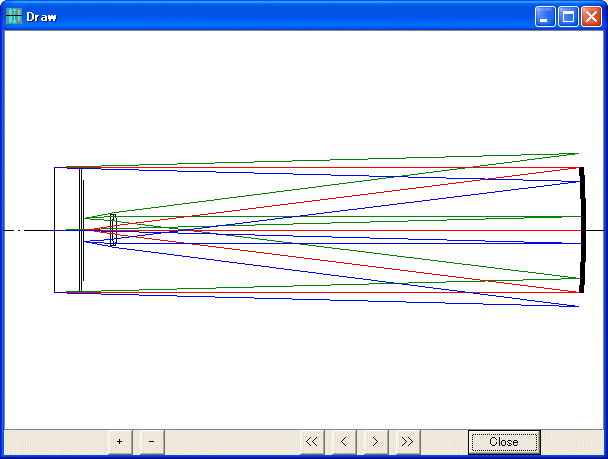 Ray Diagram of Schmidt Newton telescope + T-Reducer
Ray Diagram of Schmidt Newton telescope + T-Reducer
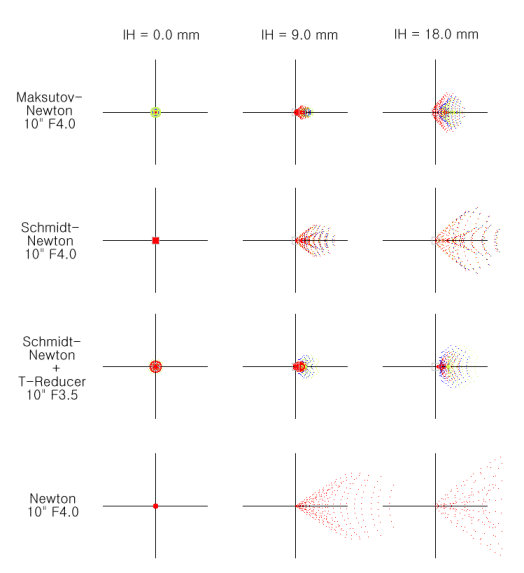 Spot diagram
Spot diagram
The T-Reducer produces a minor spherical abberation on the main optical axis,
but other abberations are smaller than the other telescope designs. As the smaller
spot diagram shows this spherical abberation is negligible. The Edmund doublet
lens is achomatic. If an apochromatic lens is used, even better photographs could
be produced.
Here is an apochromatic objective lens, Borg 50ED(
f.l.=500mm), being applied as a coma corrector.
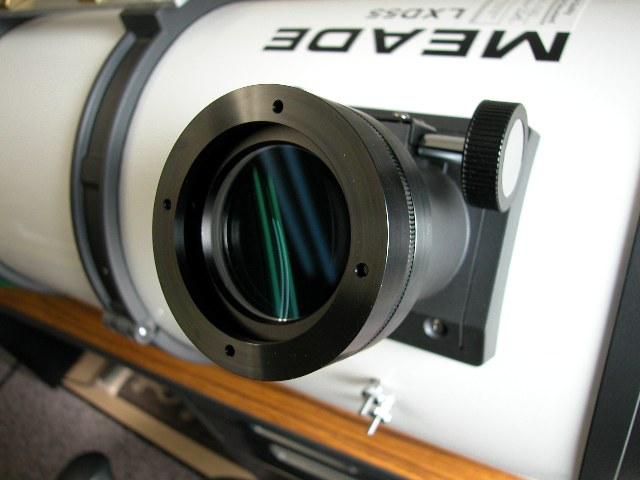
Here then is the result. Note the reduced coma in the right image.
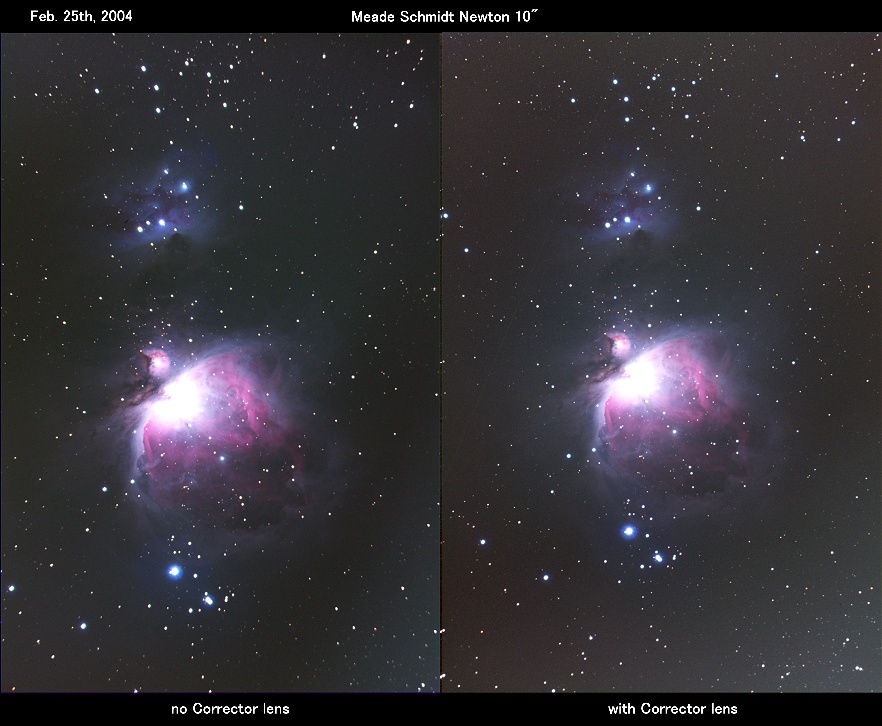
Return for future updates.
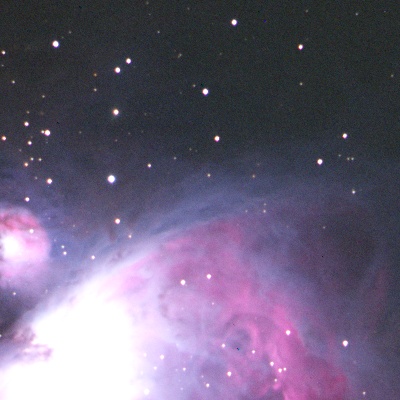
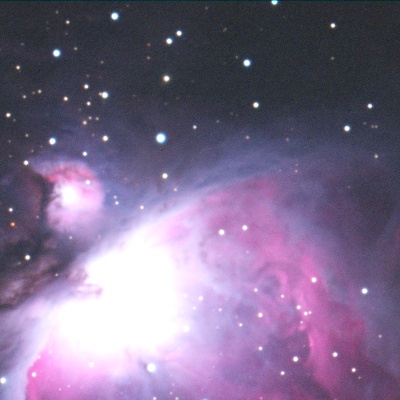
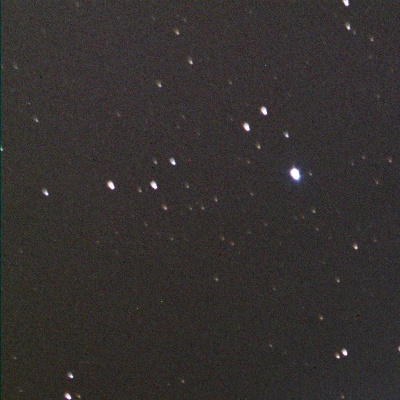
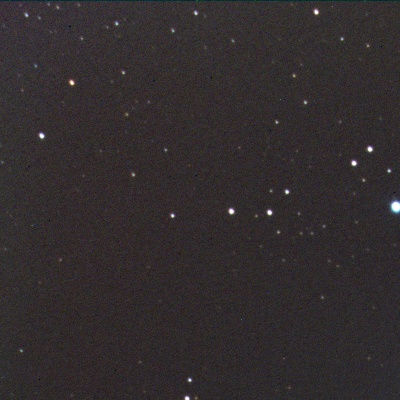
Mail to me about T-Reducer
August 17th, 2003
Feburaury 27th, 2004 in result








